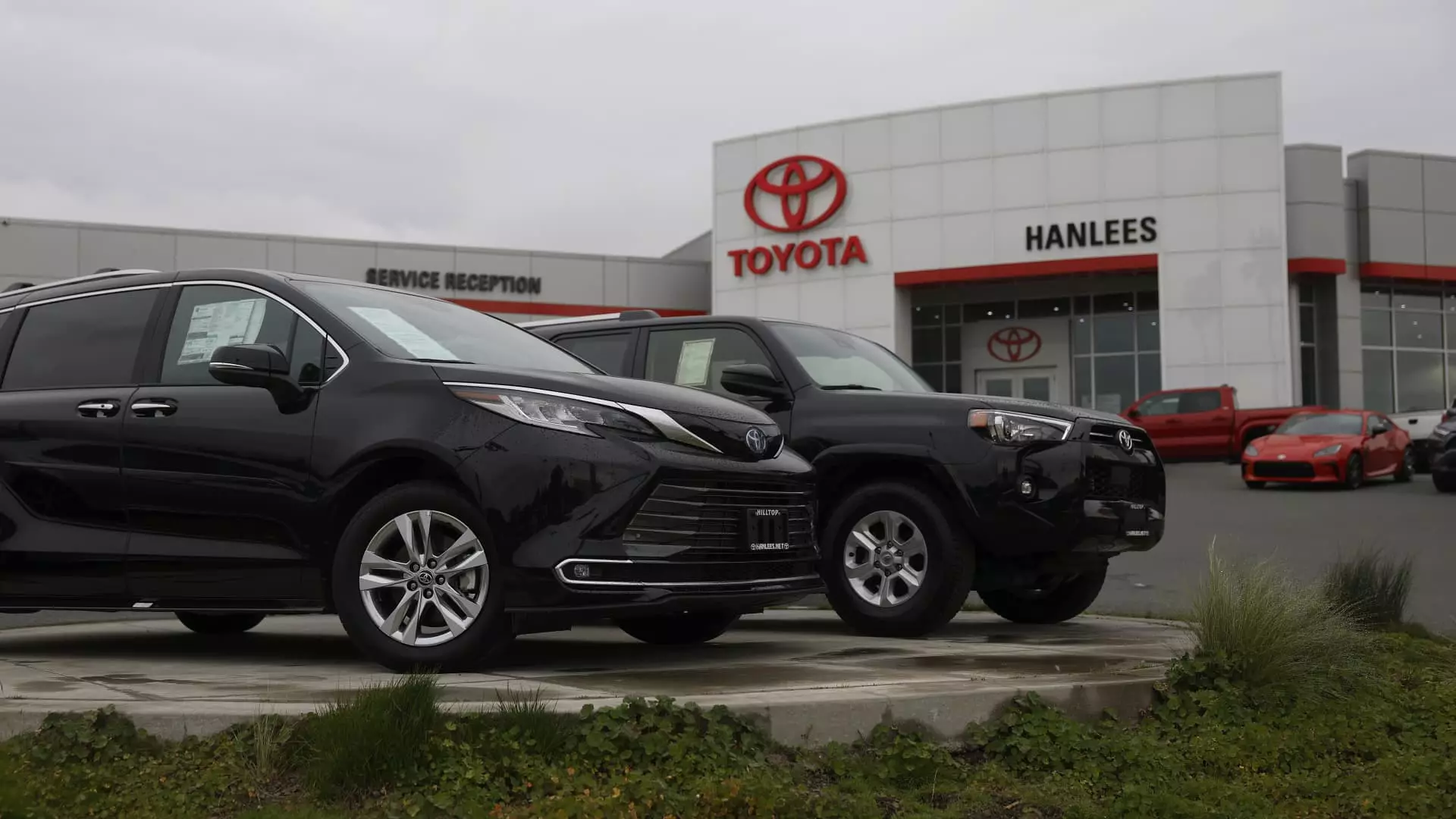The recent announcement of a 25% tariff on cars imported into the United States has sent ripples of concern across the automotive industry, particularly among Asian manufacturers. President Donald Trump’s proclamation not only raises the stakes for these companies but also casts a long shadow over their decades of investment and growth in the U.S. market. For many Asian automakers, the implications are severe, a reality that stock prices reflect with unnerving clarity. The significant drops in shares—Toyota down nearly 9.4%, Nissan at 9.3%, and Hyundai plunging 11.2%—serve as an alarming barometer for an industry that has thrived largely on American consumer demand.
This crisis isn’t merely about numbers; it’s about the existential threat these tariffs pose to established brands. Companies like Toyota and Nissan are not just struggling; they are facing a potentially devastating blow that could jeopardize their operational foundations. With these tariffs set to be implemented imminently, the clock is ticking, and the industry is left scrambling for solutions.
The Inseparability of Markets
What is often overlooked in discussions surrounding tariffs is the intricate web of international trade agreements and the deep-rooted dependencies that tie Asian automakers to the U.S. market. In 2024, these manufacturers accounted for six of the top eight in U.S. auto sales, highlighting their integral role in the American automotive landscape. The figures are staggering: a whopping $474 billion worth of automotive products imported to the U.S., of which $220 billion was specifically allocated to passenger vehicles. It’s evident that for many of these companies, the American market isn’t a secondary revenue source; it’s a lifeblood.
The reality is stark: Toyota, already the upper echelon in sales, is the most exposed, with 1.98 million vehicles sold in the U.S. alone. If Asian automakers can’t quickly adapt to this new regulatory environment, they risk not just market share but also their entire operational viability in one of the world’s largest automotive markets.
Production Puzzles and Financial Squeeze
An immediate question arises: can these automakers simply shift production to avoid punitive tariffs? The answer, embarrassingly enough, is a resounding no. Shifting manufacturing facilities involves a Herculean effort that requires both time and immense financial investment—two luxuries these companies may not have under current pressure. Joe McCabe from AutoForecast Solutions highlights this predicament well: factory relocations aren’t merely a logistical challenge, they are transformational upheavals that take years to execute.
Even strong contenders like Toyota and Nissan with established U.S. production facilities have limits to how swiftly they can pivot operations. Richard Kaye of Comgest asserts that any strategy to dislodge supply chains from Mexico or Canada would be futile, converting theoretical strategies into operational nightmares. Realistically, automakers face two disheartening options: either absorb the tariff costs and jeopardize profits or pass them on to consumers, which could lead to sky-high prices and plummeting demand.
Unexpected Survivors Amidst Uncertainty
Amid this pessimistic landscape exists a glimmer of hope for certain automakers. Suzuki, which currently does not sell vehicles in the U.S., has cleverly established a buffer against these tariffs. Its shares have increased slightly, illustrating a rare sense of stability while rivals are crashing and burning. This anomaly highlights a critical insight: the automotive industry is not a monolith. Companies can thrive or struggle based on their adaptability and market positioning.
In this context, the notion of an irreplaceable market for Asian automakers becomes all the more complex. Tariffs compel a profound reevaluation of strategies, relationships, and operational frameworks within this interconnected industry. While some companies scramble for solutions, the broader ramifications of this tariff-driven crisis may engender a long-lasting impact, reshaping the market landscape for years to come.
Rather than merely a bump in the road, these tariffs could mark a significant turning point. It’s a harsh reality check for Asian automakers who must evolve or risk becoming relics of a bygone era when globalization and free trade defined the automotive sector.


Leave a Reply